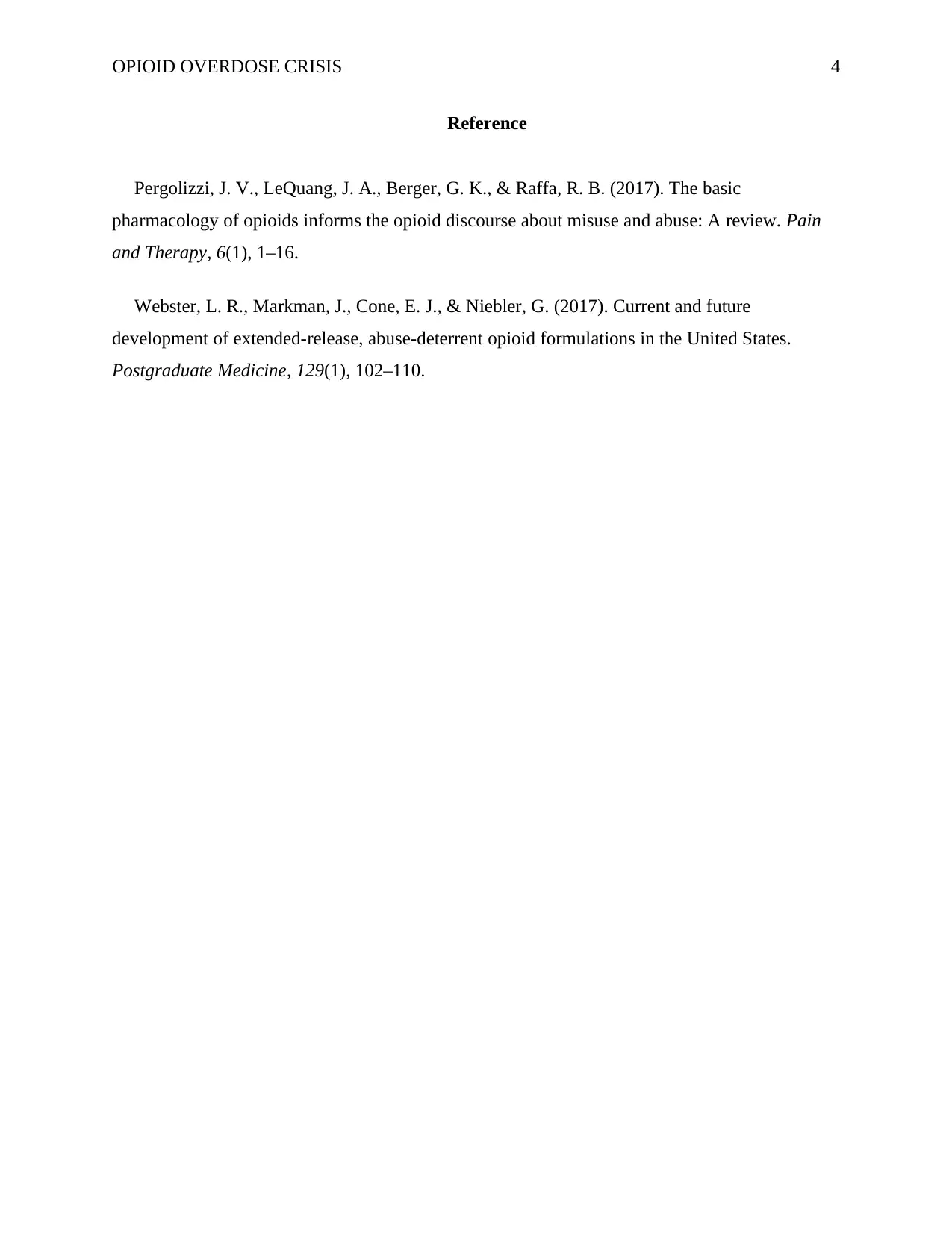Opioid Overdose Crisis: Causes, Impacts, and Solutions Report
VerifiedAdded on 2022/08/01
|4
|471
|20
Report
AI Summary
This report delves into the opioid overdose crisis, examining its causes, impacts, and potential solutions. It highlights the increasing cases of overdose and misuse, particularly the link to neonatal abstinence syndrome and other infections. The report emphasizes the importance of a public health approach, including better access to treatment, overdose-reversing drugs, and public health surveillance. It also discusses the role of government institutions, healthcare providers, and the National Institutes of Health (NIH) in managing pain and developing new medications and technologies. The report concludes by stressing the need for sophisticated overdose prevention initiatives and reversal techniques to save lives and support recovery. This assignment is available on Desklib, a platform that provides AI-based study tools for students.
1 out of 4











![[object Object]](/_next/static/media/star-bottom.7253800d.svg)